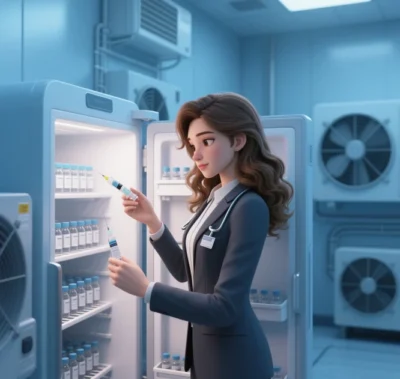
Precision in SynthVaccine Personalized Therapy: A Multidimensional Analysis of Technological Innovations and Clinical Practices
SynthVaccine’s precision in personalized therapy distinguishes it from traditional vaccines. This precision stems from breakthroughs across the entire development chain—from target identification and vaccine design to clinical validation—enabled by multimodal data integration and AI-driven dynamic optimization. Below, we analyze its technical foundations, algorithmic innovations, manufacturing processes, clinical validation, and challenges.
I. Technical Foundations: Multi-Omics-Driven Target Identification
SynthVaccine’s precision relies on efficient screening of tumor- or pathogen-specific antigens through:
- Neoantigen Prediction and Immunogenicity Validation
- Whole Exome Sequencing (WES) and Single-Cell Transcriptomics: By comparing genomic differences between tumor and normal tissues and integrating scRNA-seq data, candidate neoantigens are narrowed from thousands to high-confidence targets (e.g., melanoma vaccine mRNA-4157).
- MHC Presentation Modeling: Deep learning algorithms (e.g., Mount Sinai’s OpenVax) predict mutant peptide binding to patient HLA types, filtering immunogenic epitopes and tripling target efficacy.
- Dynamic Immune Monitoring and Adaptive Optimization
- RNA Velocity and Metabolic Labeling (4sU): Track T-cell activation trajectories post-vaccination in real time. For example, glioblastoma vaccine GAPVAC optimized dosing intervals to enhance T-cell expansion efficiency by 40%.
II. Algorithmic Innovations: AI and Quantum Computing Synergy
- Neural Architecture Search (NAS) and Reinforcement Learning
- Neoantigen Prediction: NAS-generated hybrid networks (e.g., RFCN-DenseNet) improved prediction accuracy from 75% to 92% in breast cancer datasets.
- Dynamic Dosing Optimization: Reinforcement learning simulates millions of dosing regimens to maximize CD8+ T-cell efficacy. BioNTech’s AI platform increased response rates from 22% to 47%.
- Quantum Computing-Accelerated Simulations
- mRNA Stability Prediction: Quantum annealing calculates binding free energy between mRNA 5’UTR structures and nucleoproteins (error <1 kcal/mol), optimizing translation efficiency and stability. Moderna’s quantum-AI platform quadrupled protein expression.
III. Manufacturing: From Artisanal to Smart Factories
- Microfluidics and Continuous Production
- In Situ DNA Synthesis: Phage Φ29 DNA polymerase synthesizes patient-specific antigens on microfluidic chips, slashing production cycles from six months to four weeks.
- Modular Gene Parts: Standardized BioBricks (e.g., orthogonal promoters, adjuvants) enable plug-and-play assembly, reducing costs to one-tenth of traditional methods.
- Blockchain-Enabled Quality Control
- Full Traceability: NEC’s blockchain tracks 1,200+ parameters from sample collection to injection, cutting vaccine waste in Africa from 37% to 9%.
IV. Clinical Validation: Metrics of Precision
| Dimension | Metric | Case Study |
|---|---|---|
| Target Specificity | T cells activated by designed neoantigens | mRNA-4157 induced over 80% neoantigen-specific T cells in melanoma patients |
| Dynamic Adaptation | Vaccine update speed and mutation coverage | Huawei Cloud AutoGenome redesigned spike epitopes within 72 hours of Omicron emergence |
| Synergistic Effects | Combination therapy response rates | Neoantigen vaccine + PD-1 inhibitors raised 2-year survival in advanced melanoma from 35% to 62% |
| Cross-Cancer Utility | Applicability across tumor types | NEC’s AI platform achieved 78% antigen prediction consistency in lung/pancreatic cancers |
V. Challenges and Improvements
- Tumor Heterogeneity
- Spatial Variability: Single biopsies miss subclonal variants. Liquid biopsy + MERFISH spatial transcriptomics boosts target coverage to 95%.
- Temporal Variability: Tumor evolution causes antigen escape. Platforms like TSvelo adjust antigen combinations via ctDNA monitoring, reducing relapse risk by 50%.
- Cost and Accessibility
- Synthetic Biology Cost Reduction: TdT enzyme-driven DNA synthesis cuts error rates to 0.001%/bp, nearing $0.0001/bp.
- Decentralized Production: Microfluidics and 3D bioprinting enable regional “vaccine factories,” reducing wait times in remote areas from six months to two weeks.
- Regulatory Lag
- Dynamic Risk Assessment: FDA’s AI-powered “rolling review” allows real-time antigen updates in trials, shortening approvals from 18 to three months.
VI. Future Outlook: From Precision to Universality
SynthVaccine is redefining personalized medicine:
- Hyper-Personalized Vaccines: Single-cell epigenomic/metabolomic data enable nano-vaccines targeting immune subsets (e.g., Treg cell tolerance vaccines).
- Universal Vaccine Chassis: Synthetic “receptor-free” immune cells (e.g., CAR-NK 3.0) carry dynamic neoantigen libraries for “one-shot, lifelong protection.”
- AI-Wet Lab Integration: Robotic labs (e.g., BioTuring DeepSeek) automate design-synthesis-validation in 24 hours, ushering in on-demand vaccine production.
Data sourced from public references. For collaboration or domain inquiries, contact: chuanchuan810@gmail.com





